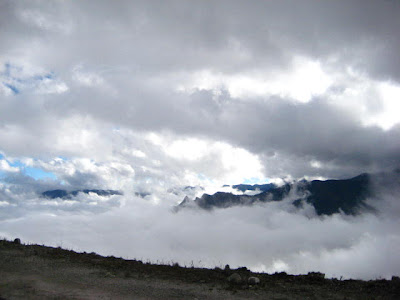I often come across damselflies in my garden. They come in a range of colours, each one more beautiful than the other. The two pictures below were taken from a wild part of my mother's garden.
Damselflies are insects in the order Odanata. Damselflies are similar to dragonflies but the adults can be differentiated by the fact that the wings of most damselflies are held along, and parallel to the body when at rest. Furthermore, the hindwing of the damselfly is essentially similar to the forewing, while the hindwing of the dragonfly broadens near the base. Damselflies are also usually smaller, weaker fliers than dragonflies, and their eyes are separated. Source:
Wiki.
The other day I found a damselfly caught in a spider web. Very gently, I pulled it out. Using the word
pull does sound harsh for such a fragile-looking insect but damselflies are aggressive insects and many will pray on other damselflies. This one was a fighter. Its wings were stuck together and because it had been caught in the web, my hands felt like I had touched glue. I placed it on a datura bloom (the nearest one) making sure that it could grip the edge of the petal and put its wings back in order. If you click on the photos you'll see the remains of the web on its body.
After struggling for a while, it fell off the bloom and I placed it on a neighbouring plant, the sedge. The struggle with the gooey stuff was nearly over but the right wings were still stuck together. I left it there to hurry back to my chores. When I came to check it later, it was nowhere to be seen.
I looked under the plant but didn't find it. With the right wings stuck together, I doubt whether it could even fly to the next leaf. Or maybe it did!















































